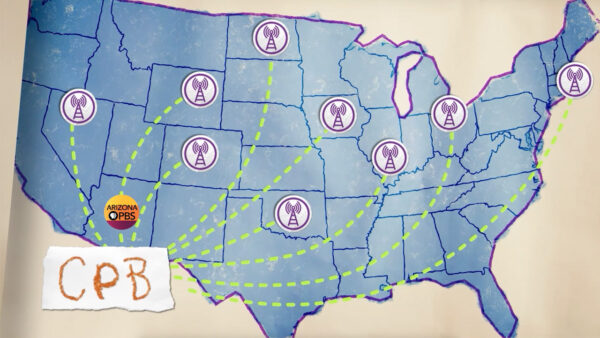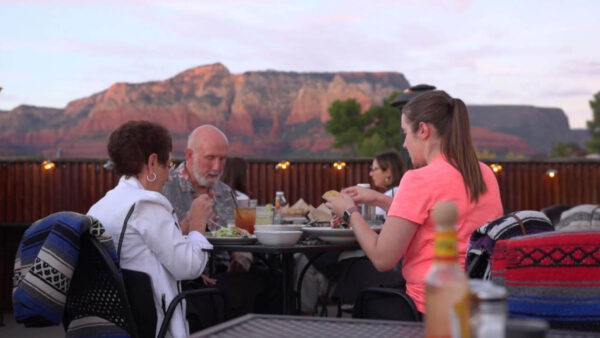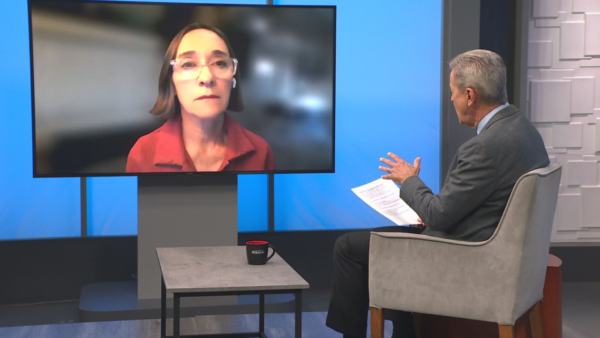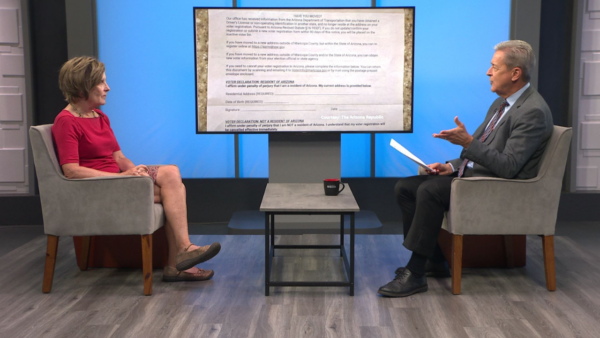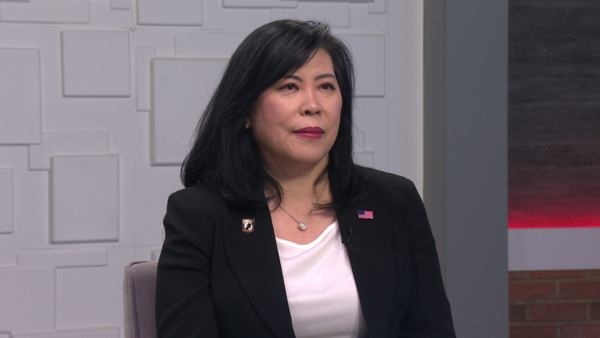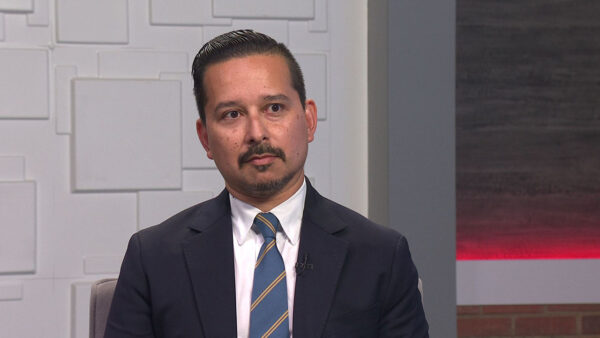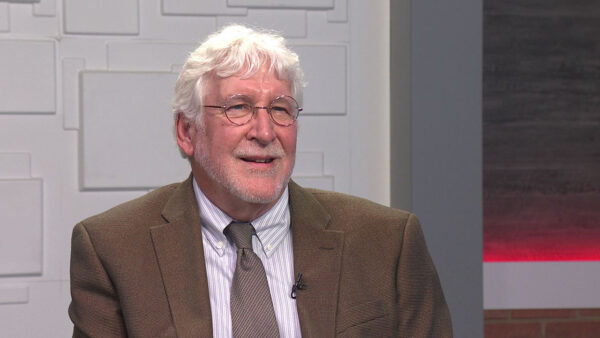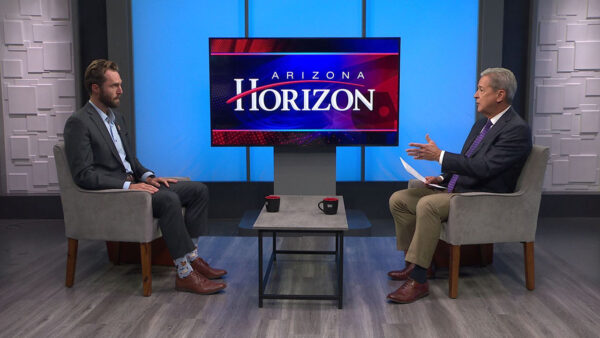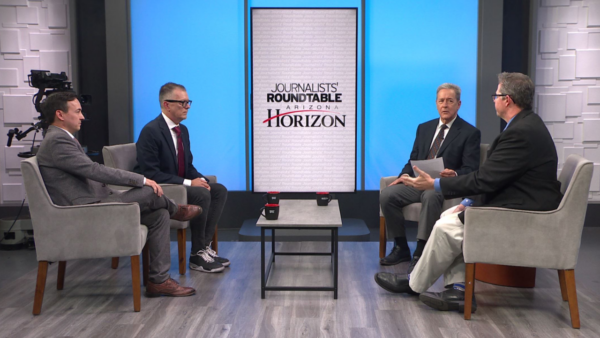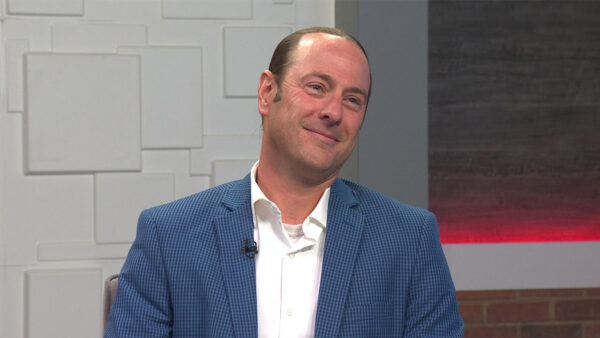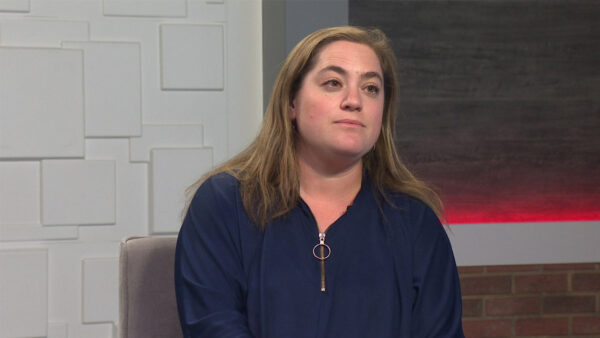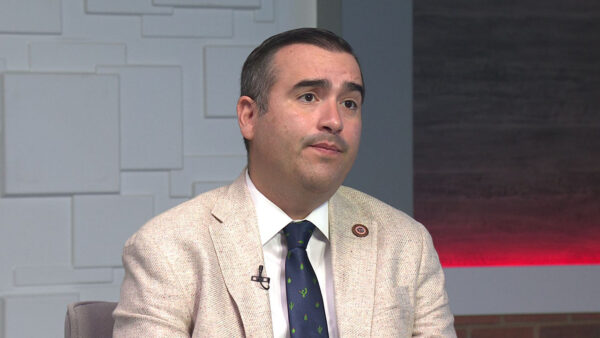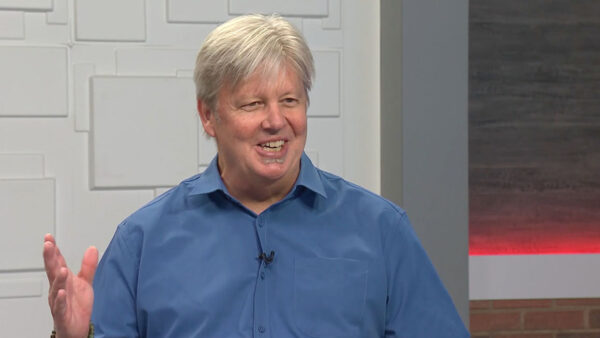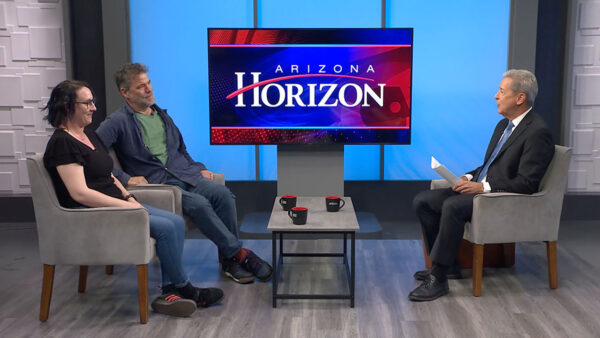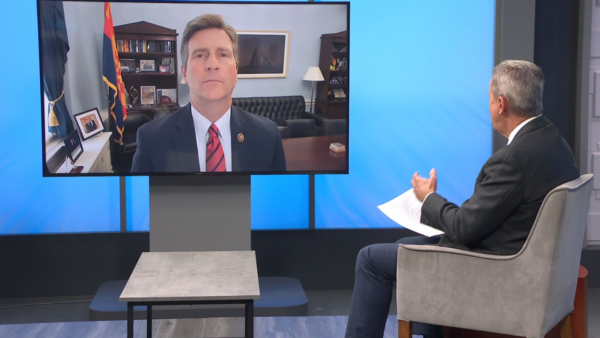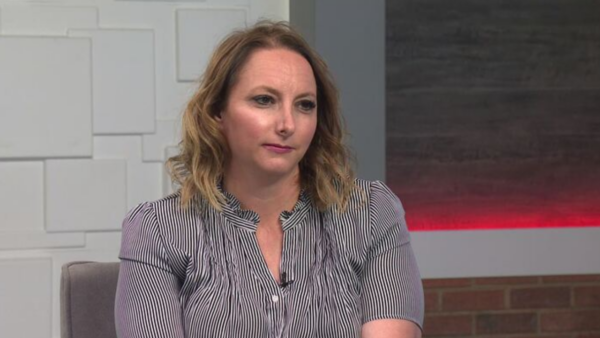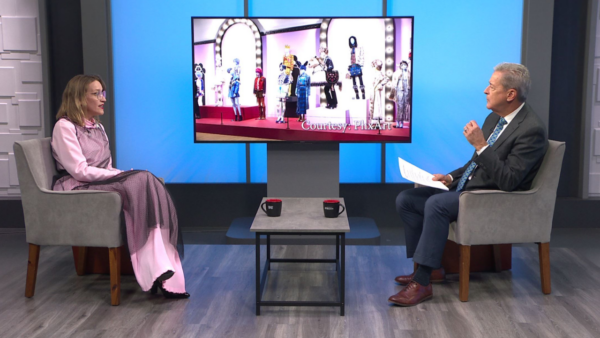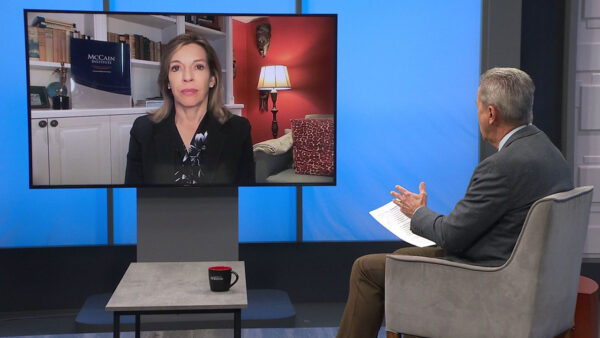HORIZON examines how high schools are teaching students the latest technical skills to prepare them for career opportunities related to the growing needs of Arizona’s industry and business.
Guests are:
Rep. Mark Anderson, Chair, House Education Committee
Gregory Donovan, Superintendent, Western Maricopa Education Center (West-MEC)
>>Ted Simons: Tonight on "Horizon," we will take a look at the results of Super Tuesday in Arizona, and what it all means. Plus we will show you one way high schools are contributing to the economic development here in Arizona. Those stories next on "Horizon."
>> Announcer: "Horizon" is made possible by contributions from the Friends of Eight, members of your Arizona PBS station. Thank you.
>> Ted Simons: good evening, I'm Ted Simons. Welcome to "Horizon." the eyes of the world were on Arizona last night as Arizona senator John McCain made a speech, this after a day of success at the polls. Mike Sauceda reports.
>>Mike Sauceda: In a nice quiet home in Paradise Valley supporters of Mitt Romney gather to await election results, Maricopa County Sheriff Joe Arpaio who endorsed Romney was in the crowd.
>> Joe Arpaio: I was very impressed with him. I was impressed with his leadership, running the -- a tough state, especially being a republican in a democratic stronghold, and I like his stance on illegal immigration.
>>Mike Sauceda: Will he support McCain if he wins the republican nomination?
>>Joe Arpaio: It is premature to say that, if he wins. If he wins, of course I will support him.
>>Mike Sauceda: Romney picked up 34% of the vote, McCain winning with 47%.
>>Jason Rose: McCain was looking for a knock-out punch, and time will tell, but it looks like it might have been a glancing blow.
>>Mike Sauceda: Just a few miles away and a few hours later Senator McCain walked on stage to the theme of "Rocky", tentatively thinking he might have landed a knock out punch.
>>Jon McCain: Tonight we must get used to the idea that we are the Republican party front runner.
>>Mike Sauceda: Media from all over the world were at the speech, where McCain thought he might be close to breaking the Arizona curse.
>>Jon McCain I am as is often reported, a little superstitious. I don't want to make any exaggerated predictions, and there is still a long road ahead. However, I think it is fair to say that we might have come a little bit closer today to the day when mothers in Arizona might be able to tell their children that some day they could grow up to be president of the united states. [cheers]
>>Ted Simons: The Arizona campaign for Hillary Clinton and Barack Obama held their watch parties at the Wyndham Hotel in downtown Phoenix but on different floors. Larry Lemmons takes us up and down the elevator.
>> Larry Lemmons: By the end of the night, supporters for Hillary Clinton would claim victory in Arizona.
>>Clinton Supporter: We thought we would win. We didn't think we would win by this margin. We have many people to thank, above all, Hillary Clinton to thank.
>>Clinton Supporter: Arizona has spoken loud and clear for Hillary Clinton.
>>Larry lemons: Captivated by the big screen as the numbers told the tale. On the third floor, The Obama crowd was also jubilant.
>>Janet Napolitano: The more people see, hear, Obama, and think about what Obama is saying, the more he persuades them that he ought to be the nominee and indeed the next president.
>>Obama Supporter: more people believing in his message, believing what he is talking about, and a fresh new face with fresh ideas.
>>Obama Supporter: Ignite this spirit of hope.
>>Obama Supporter: we will work very hard to ensure that not only we turn out this particular presidential primaries, but come November as well. We want the white house. We will take it in November.
>>Larry Lemons: One idea shared by both camps, the realization that either democrat could likely go head-to-head with senator McCain.
>>Obama Supporter: I think he represents an order that has been around too long in Washington, and we're going to have to sweep the slate clean.
>>Larry Lemons: The bottom line for many democrats, this election is truly getting more people interested in politics.
>>Obama Supporter: even during football nights, they have more people watching the debates than ever before. The excitement level is very, very high, and as a former government teacher, I think that is terrific.
>>Ted Simons: Joining me to talk about Super Tuesday, professor Patrick Kenny, chair of the ASU political science department and Richard Herrera associate professor of political science at ASU.
>>Ted Simons: The win for McCain, the night for McCain in general last night, big enough of a night for him?
>>Patrick Kenney: It didn't clinch the nomination, but it clearly is enough for him. He's on the road. I think there will be a couple of more bumps because it has been that kind of year, but he is fully on the road and I fully expect he will be the nominee.
>>Ted Simons: Is he starting to woo conservatives, are they starting to get over there?
>>Patrick Kenney: it doesn't look like that from the exit polls, because the conservative base of the party, depending on the regional location, either voted for Huckabee or Mitt Romney. I don't think he has been able to crystallize those voters yet.
>>Ted Simons: The Huckabee factor, he took -- he did a little more than that, he won quite a few places. Talk about that dynamic now at play.
>>Richard Herrera: he sure did pick up a lot of unexpected votes, especially spending very little money, in the face of big campaigns by Romney the southern states. He is getting more momentum going himself, money into his campaign, do some advertising -- he is not in a position to win the nomination, because I think McCain is so far ahead right now, he is not going to be in a position to take the nomination away from McCain, but he is going to be in a position to control a number of delegates in the convention, and perhaps other things that McCain may be looking at.
>>Ted Simons: Romney did not do well last night. Didn't do well in Arizona, maybe did as well as was expected, why is he faltering?
>>Richard Herrera: I think a part of it is conservatives, to the extent voting for McCain, Republicans are now looking at who can beat the Democratic candidate. The electability factor has gone way up. And so independents are able to vote in those states, they're supporting him much more than they are any of the other candidates, so he has been able to gather enough momentum, and until recently, he has not been the subject of a lot of attacks by the other candidates. Huckabee when he was successful in Iowa was the target for a while. He has been immune from that for quite a while. It is only recently that he has been the target of attacks and at this point he has lots of delegates.
>>Ted Simons: we talked about the fact that conservatives are hesitant to jump on the McCain band wagon and may not jump on it at all. To that end, he has a big night, the front runner, are we seeing a change in the GOP? The party, moderates starting to get a little more control of the GOP.?
>>Patrick Kenney: I think that's hard to tell right now, because McCain kind of straddles that moderate and conservative wing of the party. I know the conservatives right now have a little trouble with him, but I think he straddles enough to put that -- once they see one of those two democratic candidates out in front of them, for several months before the election, I think they will be there.
>>Ted Simons: who do you think the Republicans would rather run against?
>>Patrick Kenney: If you listen to the strategists, they always identify Senator Clinton. And they're pretty strong in their view on that. I think the reason is that they think they can put together an electoral map that we saw in 2000, 2004. I think they think she is close enough to both the last two democratic candidates that they can figure a way for the electoralcollege to beat her.
>>Ted Simons: As far as the democrats are concerned, was it basically even-steven last night?
>>Richard Herrera: absolutely. They came out with one candidate, Obama getting a few more states, but he needed to get more states in order to counter-balance the big states she got, California, New York. In the end, in terms of delegate counts, virtually even at this point.
>>Ted Simons: Why did not Obama do better in Arizona, in general, and the latino vote both in Arizona and California, he did not do all that well, especially in California where Clinton won big with the Latino voters.
>>Richard Herrera: he generated quite a bit of momentum out of new Hampshire and south Carolina and then you are hit right away with 20 states to campaign in. To capitalize on that momentum in a short period of time is hard to do. He makes one stop in Arizona instead of a number of stops. He doesn't spend as much time in California as he would like to. The Latino vote did swing heavily toward Hillary Clinton, and as a portion of the Democratic vote is a big one.
>>Ted Simons: Are we seeing a generational switch here in terms of the democrats? Are we seeing younger, even more affluent folks are going for Obama, older, working class folks going towards Clinton?
>>Patrick Kenney: That is how the votes have been breaking. Whether the party itself is transforming is too early to tell. We can't tell at this moment because some of the young people in particular that are being mobilized by Obama, do they remain with the party once we get past the nomination stage? It is a little hard to tell. Hillary Clinton is doing incredibly well. The numbers are quite strong that she holds together what is considered the traditional democratic coalition in terms of education, income, in terms of location, region, where these people live, like the Northeast and the west coast. And so that traditional coalition, she's doing a better job with that than Obama.
>>Ted Simons: Is that just because of as she says, experiences, organizations in better shape in some of those areas where maybe there are more traditional democrats?
>>Patrick Kenney: I think it is the organization, the Clinton years, her experience, the Clintons together, their reach into the democratic party is really strong. No Democratic candidate has won back-to-back presidential contests since Franklin Roosevelt. The popularity of Clinton in the Democratic party is strong.
>>Ted Simons: Are things going to get settled before then?
>>Patrick Kenney: I don't think it will be brokered, for the simple reason that Edwards only has 26 delegates. Two candidates should be able to come up with,one of those two should be able to manage 50% plus one. It might be incredibly close, but you should be able to see that happen. The question, one of the most interesting questions which none of us have ever dealt with because in the new modern system, the super delegates have never decided a race since we changed the system. And they could actually I think decide the race somewhere around or near the convention. I don't think they will wait until the convention because the democrats would like to have that settled before they get to the convention.
>>Ted Simons: We could wind up with the smoke filled rooms and the whole nine yards?
>>Richard Herrera: If you think of the delegates that way, right.
>>Ted Simons: They are wild cards. They get to choose where they want to go
>>Richard Herrera: That's right.
>>Ted Simons: educators were at the state capital today advocating on behalf of something known as career and technical education. What is CTE.? David Majure found out. mm
>>David Majure: Learning skills and exploring careers. That's how many Arizona high school students spend parts of their day, taking classes that appeal to them and make learning a bit more relevant.
>>John Mulcahy: opportunity for students to make connections between what they do in school and what they later do in life, and when students see the value and relevance of education, they are the students who are engaged, come to school every day and are successful.
>>David Majure: These courses are classified as C.T.E., career and technical education.
>>Sally Downey: It is probably a more modern name for vocational education, however, it is not just a name. Career and technical education has evolved from vocational education, has changed a lot because of technology.
>>John Mulcay: Years ago a student participating in vocational education would have a narrow range of options, wood shop, home ec, and perhaps business. Today that list of options includes everything from biotechnology, to nursing, allied health programs, pharmacy tech, medical imaging and the list goes on.
>>David Majure: CTE is touted as a gateway to higher education and higher wages.
>>Sally Downey: We have a saying here that every scholar needs a skill. If we can prepare them with a skill to work their way through college or build on that skill in electronics to become an engineer, either way is a win-win.
>>David Majure: Providing career and technical education can be very expensive and cost prohibitive. In 1990, a state law was passed allowing two or more school districts to form together and form a joint technological district. They are funded much like school districts. The East Valley Institute of Technology is the only j-ted that owns or operates a central campus. Serves high school students from ten districts providing a wide array of CTE classes in state of the art facilities.
>>Sally Downey: The whole idea behind it is it is cost effective. If you have one central campus and the ten districts can share the facilities, you will save money. To operate a top quality career and technical program costs a lot of money. Equipment changes constantly. You have to try to stay on the cutting edge without getting on the bleeding edge.
>>John Mulcahy: There are certainly advantages to centralized programs began because of ability to build expensive facilities with expensive equipment and make for efficient use of those resources, but we can do a very good job in comprehensive high schools.
>>David Majure: Most are covered on existing high school campuses. These courses are funded by the western Maricopa education center, consists of 12 west valley districts. The facilities may not measure up to EVIT but the Peoria school district director says they're every bit as effective.
>>John Mulcahy: As we know it, at the end of the day, it is the teacher. There are quality teachers at centralized programs, as well as at satellite programs in comprehensive high schools. At the end of the day, the quality and instruction will always be based on the quality of that teacher.
>>Sally Downey: The outcomes, as a result of the expenditures. The dollars, how many licensed practical nurses in the work force, how many auto mechanics are you putting into the work force? To me that ought to be the measure if the money is being spent correctly, the results of the outcome of the operation, whatever model that might be.
>>Ted Simons: Joining me to talk about career and technical education, Mark Anderson a mesa republican who chairs the house education committee, and Greg Donovan, a j-ted serving the west valley.
>>Ted Simons: I know you and others were down to the state capital today, why?
>>Greg Donovan: we had our annual career and tech education today at the state capital, we had teachers and students to advocate and help our legislators know about the programs and the success of the programs.
>>Ted Simons: what did you want them to know the most?
>>Greg Donovan: The impact that these programs have on students. That's why we had students there. The relevance and relationship that it brings to their education on a daily basis.
>>Ted Simons: mark, is that message getting across to the legislators?
>>Mark Anderson: I think it is. It's been an education of the legislators, if you will, to learn about these programs, how they work, how they're funded, and most important, the impact it has on not only the students, but our economy and the businesses that support these.
>>Ted Simons: For those who are confused of what a j-ted is, it is an overlay district?
>>Mark Anderson: they approve a tax that goes into the program, and students are also funded through regular A.D.M., which is the way we fund traditional schools, and the reason why we have it is because as dr. Downey pointed out in the previous video, a lot of the programs require extensive equipment and extra special training on parts of the teachers, etc. There is an additional costs in order to be able to provide those quality programs.
>>Ted Simons: We saw on the program, this EVIT center, a place where it looks like great stuff is happening. Is that a better model to have centralized like that, as opposed to maybe the satellite courses at different high schools where a kid has to go from one place to another?
>>Mark Anderson: that was the original concept after the j-teds, but with a valley the size of the phoenix area, it is difficult to put everything together in one campus where students would have to drive or get a ride, you know, 50 miles. So, realistically, it has evolved to the point where now many of the j-teds have multiple sites, where they provide culinary in one site, welding in another site, auto repair in another.
>>Ted Simons: Is that the best of all possible worlds?
>>Greg Donovan: We would like to have a combination. We do support the evit centralized thought process. The majority of students are on comprehensive high school campuses. We want to make sure all students have the opportunity to pursue career type courses. We see a combination, because not every high school can offer every type of program. We would like to offer several sites. We cover 4,200 square miles. We believe we need multiple sites, and that's one of the issues we have been trying to address with the legislature over the last couple of sessions, how can we best do this to serve the maximum number of students with the most prudent use of taxpayer money.
>>Ted Simons: As far as barriers that exist that would prevent a j-ted from building its own structures, can you talk about the challenges you have to face?
>>Greg Donovan: With the development of the -- first passed in 1990, there is a tweak in the required language that we could build a campus, but only one, and what we're pursuing is that change in language that would allow us to have multiple campuses or multiple sites. That's really our only hang up. West mek pursued this in 2005. No matter where we said we wanted a campus, it didn't serve a great deal of the community. They said that doesn't serve us. We're not going to support that.
>>Ted Simons: As opposed to the satellite in various areas, the report suggested the centralized location idea, more rigorous, maybe got better results, am I reading that correctly?
>>Greg Donovan: I think that was the implication in that property. At that time, west mek had not been in existence at that point for a full fiscal year. They had been around for a number of years and had something to measure and look at. Most of the jteds have only been in existence since 2001, with two in 2003 and one starting this current year. As far as measurable results, we are just now starting to see those results.
>>Ted Simons: Is that one of the challenges right now, it is such a developing process, you're still trying to wait and see some results?
>>Mark Anderson: I think the results are there, and the real issue for the legislature was -- is the funding appropriate, is it being used properly to get the results that we want? We're the investors, if you will, for the taxpayers and we want to be sure our investment is a good one. We addressed that two years ago. We had a bill that focused in on the jteds, and clarified what is a jted course, and what is required to get that course out there for the kids. That addressed a lot of the concerns and the uneasiness that legislators had about the program.
>>Ted Simons: Talk more about that. A bunch of reforms have been passed. More specific what the concerns were and how they were addressed?
>>Mark Anderson: The concerns were that school districts were using the j-ted funding for courses that were not really requiring extra equipment or extra teaching, etc., and so we set up a criteria in the bill that says this is what a j-ted course is, and it defines it very clearly and it has certain requirements that just a typical course, say a business 101 course where you have a teacher and a textbook and a classroom where there is no really special reason to have extra funding wouldn't really count as a j-ted class. It gave a sense of a mission of what it really is, that it should lead to a certification, which could lead to an actual job in our community.
>>Ted Simons: Those kinds of reforms make sense to you?
>>Greg Donavon: Absolutely. And we're with it.
>>Ted Simons: What else would you like to see, though, as far as the process moving forward and, again, lawmakers taking a look here and looking over the scenario and deciding we need to go in these particular steps?
>>Greg Donavon: One of the things we're certainly interested in is the ability to get the bonding language changed so joint districts could have more than one site if appropriate for their community. Funding, the legislature through their work has struggled with making sure and funding the joint technical districts over the past four or five years. Following 9/11 as everybody had to tighten the belt. What is the role of career and technical education? How much funding is appropriate?
>>Ted Simons: C.T.E., as far as preventing dropouts, numbers, examples?
>>Greg Donavon: We think there is a number of them. You can absolutely quantify that. Number one, can you add up every student who leaves the system and say if they had had c.t.e., they wouldn't have left? No. When you talk to students, it brings that relevance, relationship, it brings fun to their day. They see a whole lot of why am I here? I'm here to do this? I can see somewhere I'm going.
>>Ted Simons: c.t.e., making for economic development, are we seeing that?
>>Mark Anderson: If you talk to the businesses involved in those programs, they are supportive, they often donate the equipment, provide teachers for specialized areas. For me the biggest concern is the new mandate from the state board of education requiring more math and science, that will affect the jteds and affect how many courses kids can take in c.t.e. I'm concerned about that.
>>Ted Simons: Thank you for joining us.
>>Greg Donavon: Thank you.
>>Ted Simons: The chief justice of the Arizona supreme court, Ruth McGreger, joins us to talk about the state of the judiciary and her priorities for Arizona courts. That's tomorrow on "Horizon." that's it for now. Thanks for joining us. I'm Ted Simons. You have a great evening.
>>Announcer: If you have comments about "Horizon," please contact us at the addresses listed on your screen. Your name and comments may be used on a future edition of "Horizon."
>>Announcer: "Horizon" is made possible by contributions from the Triends of Eight, members of your Arizona PBS station. Thank you. Captioning performed by lns captioning www.lnscaptioning.com
; Prof. Patrick Kenny:ASU Political Science Dept. Chair;Richard Herrera:ASU Assoc. Prof. of Political Science;

